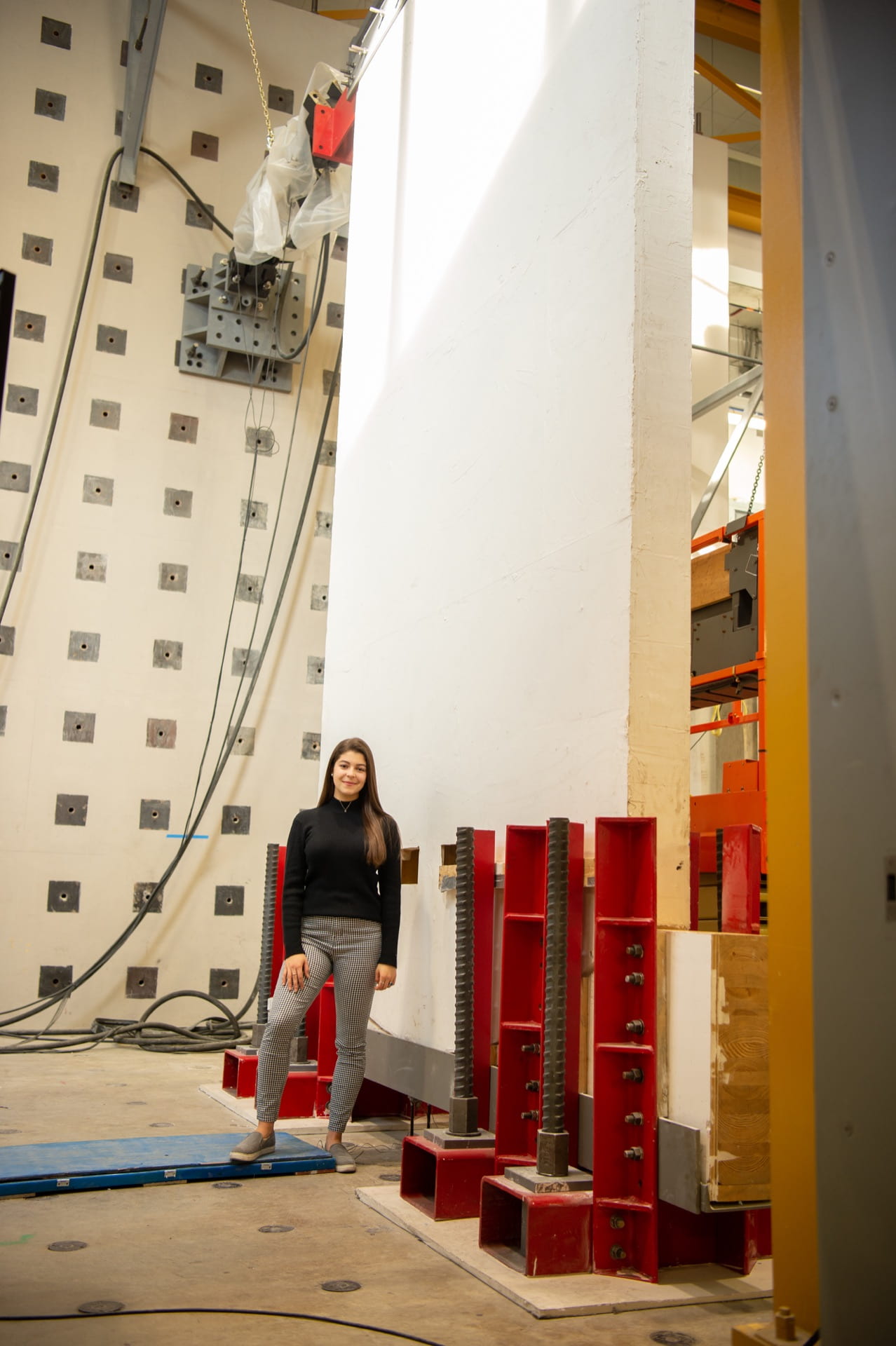
End of the Year Blog Post
This past year has been a rollercoaster of successes and failures with respect to my research project. I spent months designing and building an apparatus on which I would perform experiments to obtain the coefficients of static and kinetic friction of the wood-on-wood contact of the larger shear wall. After obtaining the coefficient of friction through a series of experiments, digital image correlation, and MATLAB coding, we were ready to run the official test on the real shear wall in the High Bay of the Science and Engineering Hall. To our great dismay, the coefficient of friction was too large and did not yield the predicted results. We had to find a solution and researched various methods to fix this issue. Strangely enough, certain studies seemed to prove that applying melted beeswax onto the surface of the wood would help the situation, so I gave it a shot. In a not-so-shocking turn of events, the beeswax failed to improve our problem. This was unfortunately the worst moment to have another failure as the global pandemic of COVID-19 surged at this time.
Due to COVID-19 and GW sending all students home, the research project went on a little hiatus as is quite complicated to perform physical lab tests online. Simulations are great, but when it comes to testing the simulation in real life, Zoom simply won’t cut it. That being said, there is always online research that can be done, especially in figuring out a solution to the most recent problem. You can’t let failure bring you down or stop you from finding the solution to a problem. Trial and error can be tedious. Scientific trial and error is what research is all about. Test if a theory works in practice. If it works, great! And if it doesn’t, then find another solution to make it work.
Introduction
My name is Myrto Kampouris. I am a junior at the George Washington University studying civil engineering and assisting Professor Silva in his research regarding structures designed to withstand seismic events. By running small-scale experiments testing for the coefficient of static and kinetic friction between two wooden surfaces, I gained a deeper understanding of the concept of friction. During the process, I used MATLAB and GOM Correlate, a digital image correlation software, to test and analyze our data with the help of Olivia Lee, a high school intern.
The biggest challenge for me this summer was getting started. I overcame the challenge of creating an initial design for the apparatus by testing out different designs once I knew what features it needed to have. This project taught me that the research process never ends; once one finds an answer to something, there are always more questions that arise. Through this opportunity, I developed ways in which the concepts of static and kinetic friction can be used in a preventative manner during earthquake relief, and I hope to continue to challenge the conclusions we came to and explore further possibilities.
Even before becoming a Clare Boothe Luce Scholar, I was surprised at how simple getting involved in undergraduate research was. During my sophomore year class with Professor Silva, he told us about his research in the high bay in the Science and Engineering Hall. Naturally, my curiosity led me to ask questions about this subject during his office hours. Soon after, Professor Silva allowed me to check out the progress of his project in the high bay, and I came back every week to contribute where I could. Eventually, I was given more meaningful tasks and became fully involved in the research process. Although it may seem intimidating, I strongly urge any GW students ––especially women in STEM––who are interested in participating in undergraduate research to reach out to professors for undergraduate opportunities.
Bio
Myrto Kampouris is a senior at the George Washington University studying civil engineering and assisting Professor Silva in his research regarding structures designed to withstand seismic events.